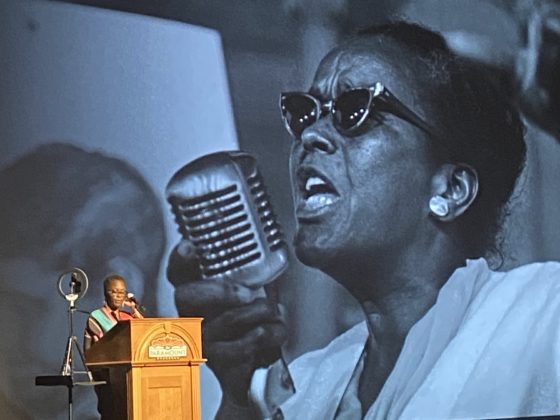Last week, we hosted eleven prominent alumni at Darden who comprise the Dean’s Diversity Advisory Council. Dean Bob Bruner convened this group four years ago to assist Darden in its goal to become the business school that best capitalizes on the diversity in its community to create a high engagement learning experience. Last week’s meeting was stimulating, energizing, and fun because as Chief Diversity Officer, I got to work with a fascinating group of people—alumni, Darden leaders, and colleagues—who were there to help us think strategically about how to use diversity to make Darden better. Since that meeting, I’ve continued to reflect on the question that captivates me: how can organizations use diversity to generate high performance?
I came up with an answer: Do “real” diversity and not “fake” diversity.
What I mean is that real diversity work—the activity that will affect the bottom line performance and growth of the enterprise—is connected to the real mission and strategy of the organization. Pretty straightforward to understand, right? Okay, so now comes the tough message—most organizations I study are faking diversity. They think their diversity initiatives are examples of real diversity work, but in fact, they aren’t. Often, they are far from it.
An example. Some leaders, intending to link diversity to strategy, end up explaining that they are doing diversity work because “it is the right thing do” or “other places are doing it and it seems to be going over well.” But organizations and leaders that subscribe to this line of thinking often fall short when it comes to creating sustained change toward a more diverse institution. It’s not that being virtuous as a leader or organization is a bad thing. Nor is it necessarily bad to act based on benchmarked best practice. The problem is that in these organizations, diversity-related activity takes place in the absence of being integrated into the strategic goals of the organization. People might know what to do, but they don’t really know why they are doing it. In these organizations that are faking it, leaders don’t want to say it, but they don’t really have a compelling business reason for pursuing diversity. Or, to be more precise, they can’t articulate what the compelling reason is…yet.
Now, if you are wiping your brow and saying “Phew, we’re clearly in a better place in our company than what he’s talking about,” well…maybe. Some business cases for diversity are really are well integrated into the core strategy of the business, but others merely masquerade as critical to the business strategy—they really aren’t. Having rationales such as “capturing new markets,” “innovating,” “getting the best talent,” doesn’t mean your efforts are really integrated into core strategy. You may still be faking it.
So, how do you know if you are doing real diversity work? Consider a couple of markers of “real” versus “fake” diversity. Not exhaustive, just suggestive:
- Alignment (real) vs. Diffusion (fake). When aligned stakeholders throughout the organization know why diversity matters and they know what kind of diversity matters—it’s the real thing. When it’s fake, stakeholders aren’t always sure why or what kind of differences matter. And, frankly, they don’t really need to know to get their work done.
- Diversity-savvy (real) vs. Diversity-dumb (fake). In diversity-savvy organizations, cultural norms and knowledge are replete with the language of the differences that matter. Stakeholders know the social and historical stories of the differences that are important to the business. For example, at one predominantly Christian company that did business with customers from the Middle East, nearly all employees knew the Islamic calendar, as well as history and customs of the faith. It was part of everyday interactions. But in diversity-dumb organizations, there are usually multiple outposts of cluelessness when it comes to the diversity and differences. People are uninformed or uneducated about differences that are relevant to the organization. Indeed, these folks feel that diversity is not relevant, so they don’t invest the time to learn. And guess what? If you have these outposts in your organization for too long, they are right—the message is being sent that diversity doesn’t really matter in your organization.
For diversity really to be done well, leaders must see it as so fundamental to the business that they are fearless in demanding, cajoling, and insisting that their organizations step up to it. Real diversity change is not just a loosely connected set of tactics and best practice activities—like hiring a certain percentage of women and minorities—but rather a coordinated set of activities that fundamentally changes the way the organization does business. Now, that can be a scary and exciting proposition. But real change often is. What we know is that the best leaders and organizations are willing to take a “calculated leap of faith” that truly investing in diversity will create better organizations. That is what we are trying to do at Darden.
Martin N. Davidson
Associate Dean & Chief Diversity Officer
Darden Graduate School of Business




